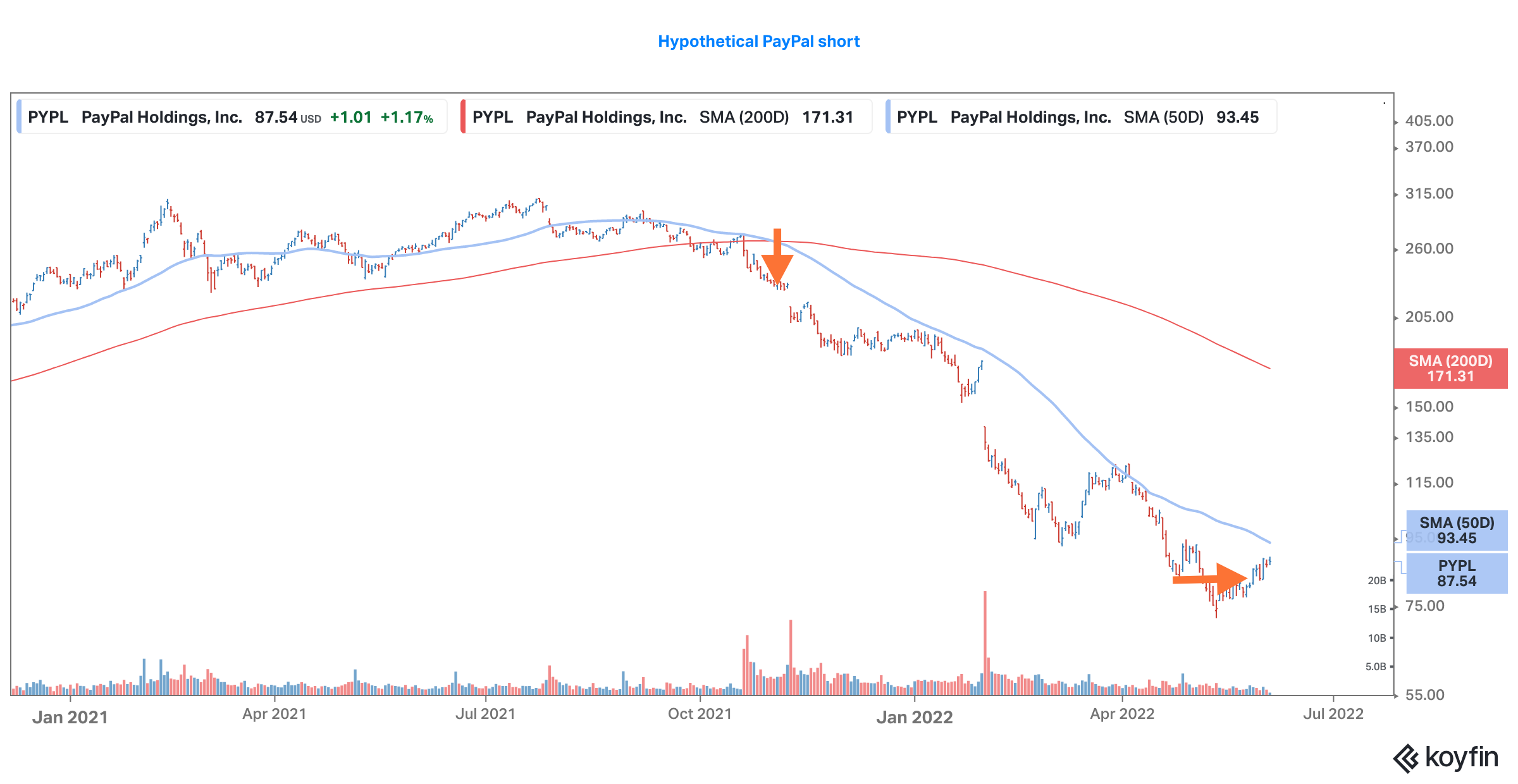Related Blogs
June 7, 2022 | Chris Rowe
It’s Chris here with a very important message…
While it may appear that demand is finally in control at the moment… it’s almost guaranteed to be temporary.
It’s incredibly important that you don’t lose sight of the fact that it leads to the setup of the greatest, easiest, most obvious Bearish trades this summer.
People incorrectly think, “Shorting is RISKY… being Bearish is RISKY. Just buying is safe.”
Well, I’m sorry for the rude awakening, but that’s a bunch of bulls**t. This type of thinking is the reason why individual investors so often underperform.
The Trend is your FRIEND.
Trading in the direction of the next bigger trend is the KEY. It’s what’s the SAFEST and that means you’re getting BEARISH near the short-term TOPS and exiting those positions at the next leg lower.
I’m begging you to “get” this. To fully understand it.
They tell you shorting is risky because “stocks can go infinitely higher.”
When I hear people say that I want to shake them. And I want to protect you from making grave mistakes with real financial consequences.
The bottom line is that a stock can go up or down by 30%. Avoiding shorting just because “stocks can’t go lower than zero” is ridiculous.
Avoiding shorting just because stocks can go infinitely higher is ridiculous, so I ridicule people who say it. You’d NEVER sit in a short position as it infinitely goes higher…
You’d exit. Duh.
Seriously, they tell you shorting is risky and that options are even riskier?
“Don’t protect yourself,” they say…
“Take on the risk of just buying in a Bear Market,” they say…
It’s almost as if the market is rigged and they want YOU to lose so that THEY can win.
Here’s How to Play a Bear Market
Now there are really two ways that I like to play a Bear Market. The first is shorting, and the second is by buying put options.
Sadly, you will never hear this kind of advice from the popular financial media or your financial advisor.
In their mind, buying and holding a fund or stock and watching it fall 50% or more is “safe” and techniques like shorting and intelligently using options are “risky.”
It just shines a light on how poorly trained many are in the financial service industry.
Trading in the direction of the primary trend is the smartest thing you can do.
So many investors underperform and suffer periods of losses because they either don’t recognize changes in trends in the market or they simply refuse to acknowledge these changes and fight the downtrend.
If I could distill everything I know about the market into one simple piece of advice, it would be this: Always, always, trade in the direction of the primary trend.
First, let’s talk about shorting.
When you “short” a stock you are effectively borrowing the shares from your broker so that you can sell them today with the intention of buying them back in the future at a lower price.
Imagine you sold shares of PayPal (PYPL) short as the 50dma crossed under the 200dma. You could have just closed out a trade with a 147-point gain!
Remind me again why the so-called “experts” tell us this is a bad idea?
Shorting is a completely legit way to profit during a market downturn, so don’t let anyone try to tell you otherwise.
Now, let’s discuss using put options.
If you’re truly worried that shorting has “unlimited risk”, then use puts to define your risk to a limited amount of money.
When you buy a put, you own the right to sell the underlying stock at a specific price. Obviously, the more the stock drops, the more expensive the option becomes.
A good way to play a falling stock is to buy what is known as “deep-in-the-money puts.” While they cost a little more than a strike that is “at the money,” they capture more of the underlying stock price movement.
For example, if you were trying to short Microsoft, a deep-in-the-money option (delta 75) would be equivalent to shorting 75 shares whereas an at-the-money option (delta of 50) would be equivalent to being short 50 shares.
The key here is not to over-leverage, but to trade in proportion to your account size. If 75 shares of Microsoft represent more value than you might normally trade, then find a lower-priced stock.
The fact is that the tools are there to make money regardless of the market direction.
Problems arise when the predominantly bullish financial media and financial service industry continue to suggest that it’s “safe” to just keep buying.
Now you know better.
If you have any questions or have been considering hiring an advisor, then schedule a free consultation with one of our advisors today. There’s no risk or obligation—let's just talk.
Tags

Free Guide: How to Find the Best Advisor for You
Get our absolutely free guide that covers different types of advisory services you'll encounter, differences between RIAs and broker-dealers, questions you’ll want to ask when interviewing advisors, and data any good financial advisor should know about you and your portfolio.


